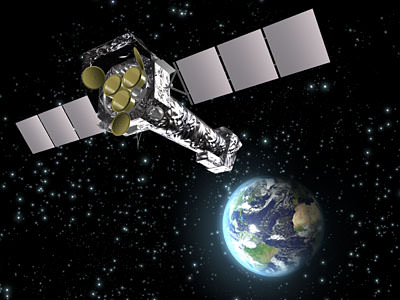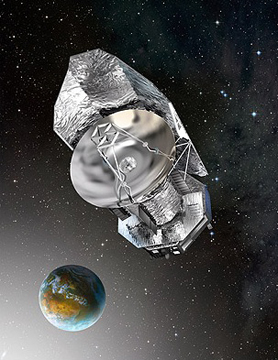Oh my goodness. Just wait until you read what the interwebs are all a flutter over. This is all a plan by the Chinese (Have you seen their economy!) to destroy our military satellites. With, uh, their one or two incredibly vulnerable space rockets. Anyway, it’s marvelous, this idea that the Chinese – who’ve been beating us at the globalization game for over a decade now – are somehow planning to destroy us and take us over.
Month: June 2013
Female Firsts in Space Flight
This past week we celebrated the anniversary of this frightening Russian woman punching the fuck out of space. Like a million years ago. Anyway, to honor her, Sally Ride (a lesbian!), and all the other hot ladies with serious perms from way back in the space days NASA made this dumb article. And that’s why I’m posting it.
Women in Space Part One, Female Firsts in Flight for Space Exploration and Research.
New Survey Will Hunt for Nearby Alien Planets on the Cheap
I’m all for checking out some cheap bit of Earth-like tale out there on the interstellar highway. Hopefully this will find us the nearest habitable world. Even though Kim Stanley Robinson doesn’t believe there’s any possible way we’d get to another habitable place like our solar system for a very long time. I say, let’s not give up hope guys! If we can see that far, why can’t we fly that far? Let’s think outside the box!
New Survey Will Hunt for Nearby Alien Planets on the Cheap | Space.com.
What Happens Around a Hungry Black Hole?
While what exactly goes on within the event horizon of a black hole is still well within the realm of theoretical physics (and it’s said that at the very heart of a black hole physics as we know it gets a serious kick in the pants) researchers are learning more and more about what happens in the immediate vicinity around a black hole, within the flattened disk of superheated material falling inexorably in toward the center. Using supercomputers, scientists can model the behavior of black holes’ accretion disks and see how gas behaves as it gets accelerated and drawn inward, heated to millions and even billions of degrees.
Here, an animation shows the activity around an active, non-rotating stellar-mass black hole. Taking 27 days to complete on a supercomputer at UT Austin, it shows “a turbulent froth orbiting the black hole” at relativistic speeds — that is, very close to…
View original post 496 more words
Want to see a BILLION-pixel view of Mars from Curiosity?
Well, here you go. Don’t say I never gave you nothin’. 😉
Actually this is a NASA-produced image made of 850 frames taken by Curiosity’s MastCam, showing the view from the rover as of late October/early November 2012. Mount Sharp (Aeolis Mons) rises in the distance, and the mountainous rim of Gale Crater can be seen along the horizon. Click the image (or the previous link text) to see a pan-and-zoom 360-degree view.
And the total number of pixels? 1.3 billion. (But who’s counting?)
15 Things Gay Men Need To Stop Doing
Yes this…
NASA Chandra, Spitzer Study Suggests Black Holes Abundant Among The Earliest Stars
By comparing infrared and X-ray background signals across the same stretch of sky, an international team of astronomers has discovered evidence of a significant number of black holes that accompanied the first stars in the universe.
Using data from NASA’s Chandra X-ray Observatory and NASA’s Spitzer Space Telescope, which observes in the infrared, researchers have concluded one of every five sources contributing to the infrared signal is a black hole.
“Our results indicate black holes are responsible for at least 20 percent of the cosmic infrared background, which indicates intense activity from black holes feeding on gas during the epoch of the first stars,” said Alexander Kashlinsky, an astrophysicist at NASA’s Goddard Space Flight Center in Greenbelt, Md.
The cosmic infrared background (CIB) is the collective light from an epoch when structure first emerged in the universe. Astronomers think it arose from clusters of massive suns in the universe’s first…
View original post 20 more words
From Keck: “UCI Scientists Size Up Universe’s Most Lightweight Dwarf Galaxy with Keck Observatory”
“The least massive galaxy in the known universe has been measured by UC Irvine scientists, clocking in at just 1,000 or so stars with a bit of dark matter holding them together.

Credit: Garrison-Kimmel, Bullock (UCI)
The findings, made with the W. M. Keck Observatory and published today in The Astrophysical Journal, offer tantalizing clues about how iron, carbon and other elements key to human life originally formed. But the size and weight of Segue 2, as the star body is called, are its most extraordinary aspects.
‘Finding a galaxy as tiny as Segue 2 is like discovering an elephant smaller than a mouse,’ said UC Irvine cosmologist James Bullock, co-author of the paper. Astronomers have been searching for years for this type of dwarf galaxy, long predicted to be swarming around the Milky Way. Their inability to find any, he said, ‘has been a major…
View original post 136 more words
From ESA: “Pinwheeling across the sky”
10 June 2013
No Writer Credit
“The face-on Pinwheel spiral galaxy is seen at ultraviolet wavelengths in this image taken by ESA’s XMM-Newton space telescope.
Also known as M101, the galaxy lies 21 million light-years away in the constellation Ursa Major. It measures 170 000 light-years across – nearly twice the diameter of our own Milky Way Galaxy – and contains at least a trillion stars. About a billion of these stars could be similar to our own Sun.
More often seen in visible light, here the Pinwheel Galaxy glows at ultraviolet wavelengths. Massive, hot young stars streaming with ultraviolet radiation mark out the galaxy’s spiral arms with bright pockets of forming stars.

Since the largest stars are the shortest lived, with a maximum lifespan of a few million years, studying the ultraviolet radiation being emitted by a distant galaxy is a good way…
View original post 199 more words







